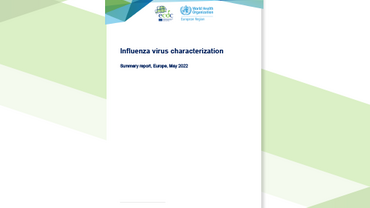Influenza virus characterisation, December 2014
Up to 31 December 2014, 129 influenza-positive samples with collection dates after week 39/2014 were received at the London WHO Collaborating Centre (CC): 18 A(H1N1)pdm09, 81 A(H3N2), 22 B/Yamagata lineage and eight influenza type B samples that had not been ascribed to a lineage. The majority of these samples have yet to be fully characterised.
Executive Summary
The single A(H1N1)pdm09 virus characterised by 31 December 2014, as those circulating worldwide, belonged to genetic subgroup 6B and was antigenically similar to the vaccine virus A/California/07/2009.
The few A(H3N2) viruses fell in genetic subgroups 3C.2a, 3C.3 and 3C.3a and were poorly recognised by antisera raised against the A/Texas/50/2012 vaccine virus but relatively well recognised by antisera raised against cell-propagated 3C.3a viruses, although the small number of 3C.2a viruses that could be analysed by HI assay showed lower HI titres.
No B/Victoria-lineage viruses had been received. The few B/Yamagata-lineage viruses characterised fell in genetic clade 3, as have the majority of B/Yamagata viruses circulating worldwide, and showed good reactivity with antisera raised against B/Massachusetts/02/2012 (the clade 2 virus recommended for the 2014–15 northern hemisphere season vaccine) and B/Phuket/3073/2013 viruses (the clade 3 virus recommended for the 2015 southern hemisphere season vaccine).
Based on reports submitted to TESSy up to week 02/2015, the 2014–15 influenza season in the EU/EAA started around week 50/2014, with the percentages of sentinel specimens testing positive for influenza being above 10% and rising since then. Influenza type A is predominating over type B by a ratio of 3.8:1, with A(H3N2) viruses predominating over A(H1N1)pdm09 by a ratio of 3.6:1, and B/Yamagata lineage viruses predominating over B/Victoria by a ratio of ~15:1.





